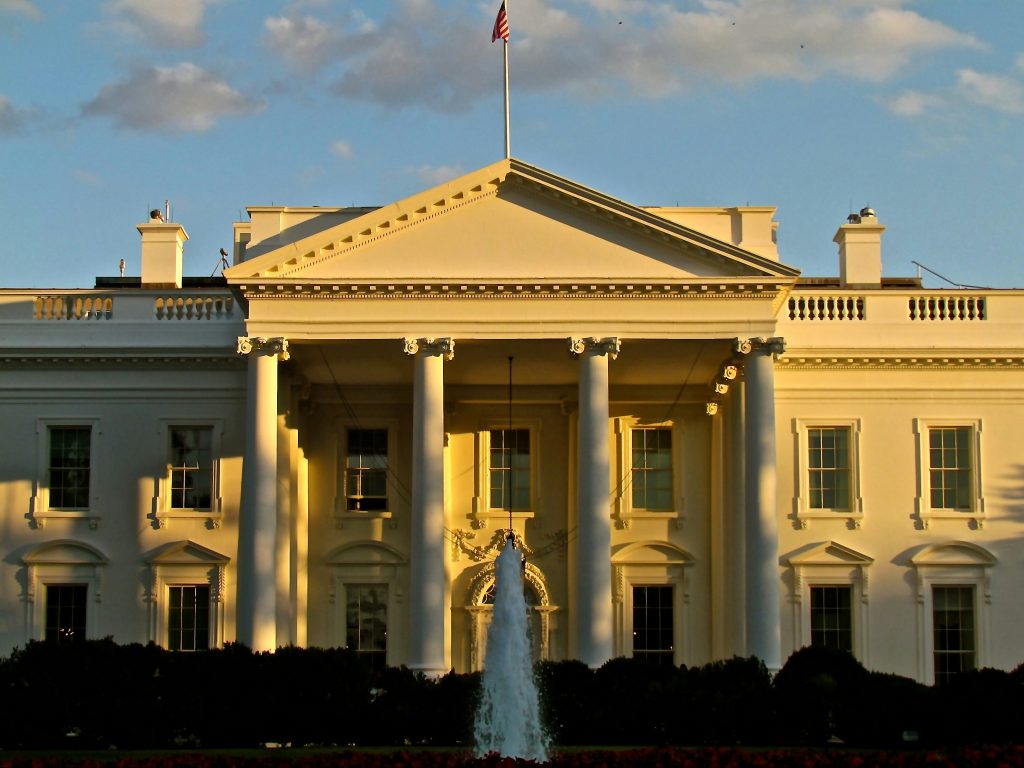TSMC Arizona: The U.S. Semiconductor Industry Is in Need of an Immigration Reform to Achieve the Goal of the CHIPS Act

By: Yu-Shan Kuo*
Taiwanese Semiconductor Manufacturing Company (“TSMC”) has recently announced its delay in launching its first Arizona plant from late 2024 to 2025.[1] Motivated by the CHIPS and Science Act of 2022[2], the original plan of TSMC Arizona was to start its two fabrication plants in North Phoenix in 2024 and 2026.[3]The investment on the two plants combined marks one of the most significant foreign direct investments in Arizona and U.S. history at approximately $40 billion U.S. dollars.[4] TSMC Arizona is anticipated to generate around 10,000 high-tech jobs and over 600,000 chips annually upon completion of the plants.[5] However, TSMC, the world’s leading microchip company – whose clients include Apple, Amazon, Nvidia, and many other industry leaders – said that it struggles to find qualified U.S. workers and needs to send more experienced technicians from Taiwan.[6]
The U.S. semiconductor industry as a whole is facing a labor shortage crisis that is slowing down the industry’s expansion envisioned by the CHIPS Act. With the key objectives of strengthening domestic semiconductor manufacturing, addressing global supply chain challenges, and revitalizing local job opportunities in the industry, the CHIPS Act allocates over $50 billion in federal grants to attract foreign investments across the country.[7] Nevertheless, while the Act has given a considerable push on capital investments, human capital falls short of demand. The highly sophisticated semiconductor manufacturing field requires technicians with specialized science, technology, engineering, and mathematics (STEM) training, and there is simply a shortage of Americans studying the field.[8] For example, in U.S. higher education institutions, over 50% of the master’s degree holders and around 60% of the Ph.D. recipients in engineering are foreign-born students.[9]
Despite the high percentage of foreign students in STEM, the current U.S. immigration policy and the massive backlog in the United States Citizens and Immigration Services (USCIS)[10] is an obstacle to foreign students hoping to stay in the country. The H-1B temporary work visa is the most common pathway for international students to stay in the U.S.[11] However, students are subjected to the uncertainty of the H-1B lottery[12] due to an annual cap on available H-1B visas.[13] The H-1B lottery is not merit-based and is based on petitions randomly selected for adjudication.[14] Currently, only around 25% of the petitioners have the chance to present their applications in front of a USCIS officer.[15] From the lottery hurdle, 80% of the master’s degree holders and 25% of the Ph.D. recipients in engineering leave the country.[16] Further, technicians in East Asia, who have more hands-on experience compared to U.S. workers in the chip manufacturing process[17], are similarly subjected to a numerical limit of available work visas[18], making it difficult for employers to bring over or hire immigrant professionals. Many of these talented engineers are then recruited by China[19], which poses the very threat to our domestic industry that the CHIPS Act attempted to tackle.[20] With the current immigration policy, around 67,000 of the 115,000 newly created jobs will potentially be unfilled, causing a risk of 58% vacant new jobs by the end of the decade.[21]
Organizations in the semiconductor industry have voiced their concerns about the skilled labor shortage and have strongly advocated for immigration policy reforms. The Semiconductor Industry Association (SIA) highlights the importance of immigrant workers by creating a specific tab titled “workforce & immigration” on its website.[22] Other than urging Congress to optimize the immigration system to allow domestically-trained STEM students to stay, SIA has also recommended the immigration agencies to “continue to explore all options to maximize visa issuance … to ensure that employment-based Green Cards do not go to waste.”[23] Similarly, a Government Accountability Office (GAO) report indicated expert support for the Stopped Trained in America Ph.D.s from Leaving the Economy (STAPLE) Act of 2017[24], which would exempt non-citizen Ph.D. recipients from H-1B visa caps[25]. Advocates have also recommended creating a narrowly tailored Chipmaker’s Visa that will treat the “semiconductor challenge like the truly urgent national imperative Congress deems it to be.”[26] The proposed Chipmaker’s Visa will be a 10-year program that annually authorizes 10,000 new visas with many other regulations and limitations.[27]
The goal of the CHIPS Act cannot be achieved without a reform of the current immigration system. Immigrants play a vital role in securing the success of the CHIPS Act and driving the expansion of the domestic semiconductor industry. The existing limitations imposed by current immigration policies impede and will continue to obstruct attempts to address labor shortages and hinder the objectives outlined in the CHIPS Act. If the labor shortage problem cannot be addressed, it will jeopardize the competitiveness of the American semiconductor industry.
* J.D. Candidate, Class of 2024, Sandra Day O’Connor College of Law at Arizona State University.
[1] Debby Wu & Olivia Tam, TSMC Delays Arizona Chip Output to 2025 on Worker Shortages, BL (July 20, 2023, 12:08 AM), https://www.bloomberglaw.com/bloombergterminalnews/bloomberg-terminal-news/RY31GWDWLU68.
[2] CHIPS Act, Pub. L. No. 117-167, 136 Stat. 1372.
[3] TSMC Announces Updates for TSMC Arizona, TSMC (Dec. 6, 2022), https://pr.tsmc.com/english/news/2977.
[4] Id.
[5] Id.
[6] Wu & Tam, supra note 1.
[7] See Fact Sheet: CHIPS and Science Act Will Lower Costs, Create Jobs, Strengthen Supply Chains, and Counter China,The White House (Aug. 06, 2022), https://www.whitehouse.gov/briefing-room/statements-releases/2022/08/09/fact-sheet-chips-and-science-act-will-lower-costs-create-jobs-strengthen-supply-chains-and-counter-china/.
[8] As of 2019, roughly one-fourth of the STEM workers in the United States are immigrants. Foreign-born STEM Workers in the United States, Am. Immigr. Council, at 2 (June 14, 2022), https://www.americanimmigrationcouncil.org/sites/default/files/research/the_h-1b_visa_program_and_its_impact_on_the_us_economy_0823.pdf.
[9] Ian King, Chip Industry Sees Labor Shortages Threatening US Expansion Plan, BL (July 25, 2023, 2:00 AM), https://www.bloomberglaw.com/bloomberglawnews/daily-labor-report/X3JJA410000000?bna_news_filter=daily-labor-report#jcite.
[10] See e.g., Stuart Anderson, State Department Defends Visa Wait Times, Forbes (Nov. 18, 2022, 12:16 AM), https://www.forbes.com/sites/stuartanderson/2022/11/18/state-department-defends-visa-wait-times/?sh=5b2bf81025e0.
[11] See INA § 101(a)(15)(H), 8 U.S.C. § 1101(a)(15)(H)(i)(b).
[12] H-1B Electronic Registration Process, USCIS (July 31, 2023), https://www.uscis.gov/working-in-the-united-states/temporary-workers/h-1b-specialty-occupations-and-fashion-models/h-1b-electronic-registration-process.
[13] 8 U.S.C. § 1184(g)(1)(A)(vii).
[14] See USCIS, supra note 12.
[15] Cecilia Esterline, Previously Unreported Data: The U.S. Lost 45,000 College Grads to Canada’s High-skill Visa from 2017 to 2021, Niskanen Center (Mar. 14, 2023), https://www.niskanencenter.org/previously-unreported-data-the-u-s-lost-45000-college-grads-to-canadas-high-skill-visa-from-2017-to-2021/.
[16] Ian King, Chip Industry Sees Labor Shortages Threatening US Expansion Plan, BL (July 25, 2023, 2:00 AM), https://www.bloomberglaw.com/bloomberglawnews/daily-labor-report/X3JJA410000000?bna_news_filter=daily-labor-report#jcite.
[17] The White House, supra note 7 (“We rely on East Asia for 75 percent of global production.”).
[18] See 8 U.S.C. §1153(b).
[19] Robyn Mak, Taiwan Digs Trenches in Battle for Chip Talent, Reuters (Aug. 16, 2022, 7:16 PM), https://www.reuters.com/breakingviews/taiwan-digs-trenches-battle-chip-talent-2022-08-17/.
[20] See The White House, supra note 7.
[21] 2023 State of the U.S. Semiconductor Industry, Semiconductor Indus. Ass’n., at 7 (2023), https://www.semiconductors.org/wp-content/uploads/2023/08/SIA_State-of-Industry-Report_2023_Final_080323.pdf.
[22] Semiconductor Indus. Ass’n, https://www.semiconductors.org/policies/workforce/ (last visited Sept. 27, 2023).
[23] Letter from Compete Am. Coal. to Alejandro Mayorkas, Sec’y, Homeland Sec., Antony Blinken, Sec’y, State, Ur M. Jaddou, Dir., U.S. Citizen and Immigr. Serv., and Rena Bitter, Assistant Sec’y, Consular Affs., at 3 (Aug. 9, 2022), https://www.semiconductors.org/wp-content/uploads/2022/08/Compete-Green-Card-Utilization-Letter-FINAL-8-9-22.pdf.
[24] Semiconductor Supply Chain: Policy Considerations from Selected Experts for Reducing Risks and Mitigating Shortages, U.S. Gov’t Accountability Off., at 12 (July 2022), https://www.gao.gov/assets/gao-22-105923.pdf.
[25] See Stopping Trained in America Ph.D.s from Leaving the Economy (STAPLE) Act of 2017, H.R. 2717, 115th Cong. (2017).
[26] Adam Ozimek & Connor O’Brien, The Chipmaker’s Visa: A Key Ingredient for CHIPS Act Success, Economic Innovation Group (Sept. 25, 2023), https://eig.org/chipmakers-visa/.
[27] See id.


